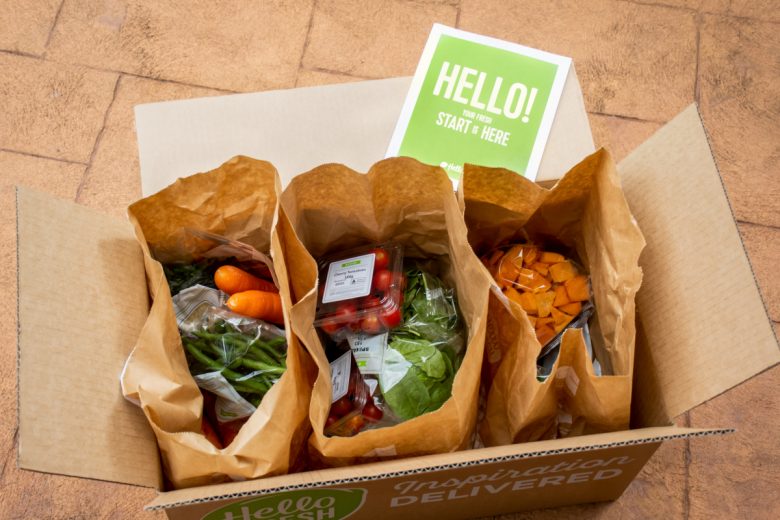In the not-so-distant past, there were two main options for having a meal: cooking at home or purchasing from a restaurant. Today, the lines have been blurred by the Restaurant Food Subscription Model. This, along with meal delivery kits, has changed the way we eat. Hungry for more? We’re serving up the details here.
What is the Subscription Model?
Just like magazines offer readers the option to subscribe every month, restaurants now offer the option for diners to “subscribe” to a similar experience again and again.
For a fixed price, customers either get the same item or a choice from a similar group of items. This is the perfect option for people who eat at the same restaurant often. This business model works well for customers who know and trust that a brand will give them a good dining experience.
There are many variations of the subscription model. Some are designed like a loyalty program, giving the customer points for money spent. Others, like Panera Bread, offer the same item again and again, making it easy for customers to calculate the possible value they can get from a subscription.
What Are the Benefits of a Food Subscription Model?
The food subscription model has elements that make it beneficial for business. For restaurant owners, having guaranteed revenue is a huge plus. This can be really helpful if you’re trying to determine what your budget is, or if you’re digging out from a tough financial time.
Customer loyalty is another big benefit for restaurant owners. It’s a common saying that it’s cheaper to keep a current customer than it is to try to get a new customer. The food subscription model is one way to build on customer loyalty. If your current customers already like and trust your restaurant, this service is one way of trying to get them to come back again and again.
Because customers with a food subscription may want to get the maximum value from it, there’s always a chance to “upsell” to them. For instance, customers with the Panera Unlimited Sip Club drink subscription may intend on only getting their free drink each time they visit. But, they might decide to treat themselves to buy something else. So, this creates an opportunity for more profit and more revenue.
For customers, the perceived value is a huge benefit. And, this is especially true when their money isn’t buying as much as it used to. Thus, customers who are spending less on nice-to-have items will look for ways to save more. Food plans can be one way customers may do that.
There are pros and cons of the subscription model. You’ll want to ensure that it is profitable. Continually evaluate to make sure your business isn’t losing money. And, be sure that the terms are clear for your customers. If they do not understand what the subscription does and doesn’t include, they may be hesitant to purchase the subscription.
Types of Food Subscriptions
Small restaurants are offering subscription models for dine-in customers. Companies that offer meal kits dropped off at your door also offer the option to subscribe to your food every month.
Meal-Kits
Meal kits have taken convenience to a whole new level by cutting out the traditional steps of preparing dinner.
This business model gained immense popularity due to a convergence of factors. This transformation in food consumption began around the 2010s and accelerated significantly into the 2020s. The meal-kit model originated in Sweden in 2007 with a company called Middagsfrid or another company called Linas Matkasse. There are conflicting sources on which company came first.
However, the increasing pace of life, particularly in urban environments, led to rising demand for convenience all over the world. With long work hours and little spare time, many people found it challenging to regularly shop for groceries and prepare meals from scratch. Meal kits offered a solution: provide pre-portioned ingredients and easy-to-follow recipes. Then, deliver them directly to the doorstep.
The growing interest in home cooking, coupled with a desire for variety and experimentation, also contributed to the rise of meal kits. They allowed users to try diverse cuisines and dishes without the usual hassles.
The number of companies that offer meal kits is expanding. Companies like Blue Apron and HelloFresh offer a wide variety of options allowing shoppers to choose what they want in their meal kits. Food is shipped to your door, and you get to choose how many people you need to feed.
There are many other meal kits, like:
- Gobble- Offers plant-based and low-calorie options
- Green Chef- USDA-certified organic meal kit service
- Home Chef- Allows you to pick if you want food familiar or new to you
- Pete’s Paleo- Paleo, vegan, and keto food
- Purple Carrot- 100% plant-based. Choose from kits that you slice and dice, or meals that are ready to eat in 5 minutes or less
- Sunbasket- Offers gluten-free, low-carb, and diabetes-friendly meals
Restaurants Subscriptions
The restaurant subscription option is a fairly new offering some food establishments have tested with varying degrees of success. These subscriptions are similar to reward programs but cost a monthly or bi-monthly fee to participate.
Taco Bell previously offered a Taco Lover’s Pass to customers who were Taco Bell Rewards members. For a one-time fee of $10, customers could use their pass to get one free taco, every day, for 30 consecutive days. However, currently, the Pass is no longer available. And, while Panera Bread’s subscription service seems to be thriving, Starbucks’ attempt to launch a subscription service in 2015 was abandoned soon after.
1. PF Chang’s Platinum
This plan is more like a loyalty program meets a credit card rewards program. And, you have to pay a monthly fee to participate. Currently, the fee is $6.99 monthly, and for that, the program promises free delivery, double points, special perks, and a concierge.
2. Taco Bell
As previously mentioned, Taco Bell used to offer a Taco Lover’s Pass to customers who were Taco Bell Rewards members. The pass, unlike the other subscriptions we mentioned, was only seasonal. While it seemed like the subscription was well received, The Bell is no longer offering it to its customers. There is no word on if the subscription will return in the future.
3. Panera Bread
The popular coffee spot offers a subscription priced at $8.99 per month. Subscribers get unlimited access to hot drip coffee, hot tea, and iced coffee every two hours during bakery-cafe operating hours. This includes multiple coffee flavors and any size option. Subscribers can avail of this service in-store, online, or via the Panera Bread app. The subscription doesn’t cover espresso, cold brew, or iced tea.
4. BJ’s Beer Club
The BJ’s Brewhouse Beer Club subscription, priced at $30 every two months, offers members exclusive beers, dining, and takeout perks at BJ’s Restaurant and Brewhouse. Subscribers receive a new BJ’s handcrafted beer every two months, along with additional benefits like priority access to new beers, discounts on takeout orders, and bonus points under the BJ’s Premier Rewards Plus program. The membership benefits and available beers vary by location due to local regulations.
The restaurant industry has quite found a way to take full advantage of the subscription model. However, it seems that many are still searching for a way to make it work. It remains to be seen if this is a viable option with many larger restaurant chains.
Conclusion
Restaurant subscriptions and meal kits have changed the way we eat. Consumers have saved time and enjoyed more convenience. These innovations will continue as business owners look for ways to ensure continued revenue and satisfied customers. If you’re starting a food business of any kind, using the subscription model is one option you can test to create predictable revenue. While this model still needs to evolve to reach a broader audience, you can bet there will more innovation of these models in the future.
Also read:
4 Main Business Models for Coffee Shops
8 Key Elements Of A Business Model that You Should Understand
5 Business Goals for a Restaurant














Pingback: 5 Things to Understand About the Catering Business Model - StartUp Mindset
Pingback: What is a Hybrid Restaurant Business Model and How Does it Work? - StartUp Mindset
Pingback: Food & Restaurant Subscription Business Models and How They Work | Entrepreneur Canada
Pingback: Food & Restaurant Subscription Business Models and How They Work – Joseph Odierno Buffalo
Pingback: Food & Restaurant Subscription Business Models and How They Work – Austin Rotter
Pingback: Food & Restaurant Subscription Business Models and How They Work – Andrea Zanon